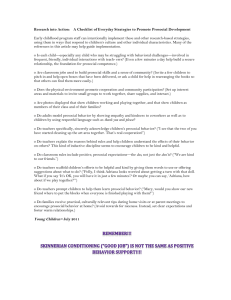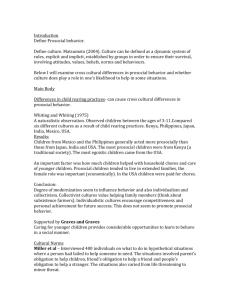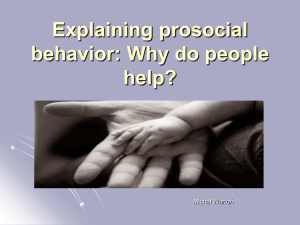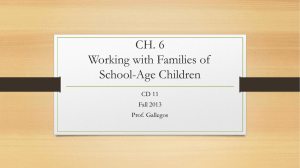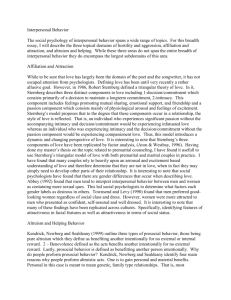PRÉCIS EXAMPLE
advertisement
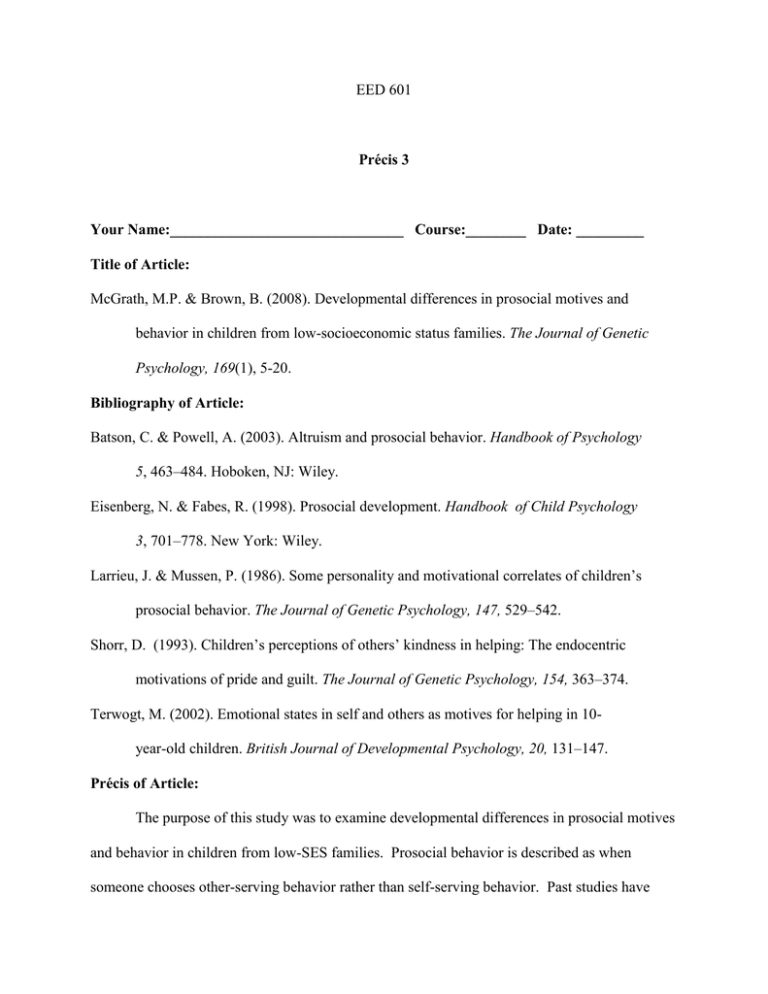
EED 601 Précis 3 Your Name:_______________________________ Course:________ Date: _________ Title of Article: McGrath, M.P. & Brown, B. (2008). Developmental differences in prosocial motives and behavior in children from low-socioeconomic status families. The Journal of Genetic Psychology, 169(1), 5-20. Bibliography of Article: Batson, C. & Powell, A. (2003). Altruism and prosocial behavior. Handbook of Psychology 5, 463–484. Hoboken, NJ: Wiley. Eisenberg, N. & Fabes, R. (1998). Prosocial development. Handbook of Child Psychology 3, 701–778. New York: Wiley. Larrieu, J. & Mussen, P. (1986). Some personality and motivational correlates of children’s prosocial behavior. The Journal of Genetic Psychology, 147, 529–542. Shorr, D. (1993). Children’s perceptions of others’ kindness in helping: The endocentric motivations of pride and guilt. The Journal of Genetic Psychology, 154, 363–374. Terwogt, M. (2002). Emotional states in self and others as motives for helping in 10year-old children. British Journal of Developmental Psychology, 20, 131–147. Précis of Article: The purpose of this study was to examine developmental differences in prosocial motives and behavior in children from low-SES families. Prosocial behavior is described as when someone chooses other-serving behavior rather than self-serving behavior. Past studies have concluded that children’s motives range from self-serving (e.g., avoiding punishment) to otherserving or altruistic (e.g., feelings of empathy). Prior research has mainly focused on gender differences and middle-SES White participants. In this study, 122 second and fourth grade students from low-SES families described different types of motives and behavior based on an open-ended story prompt. Researchers examined the correlation between age and gender on prosocial motives, responses, and dilemma presence. The results show developmental differences for both concrete and abstract motives for prosocial behavior. For instance, grade 2 girls and grade 4 boys were more likely to describe a conflict between self- and other-serving behaviors. The most frequent prosocial motive was tangible reward–beneficiary, and the most common prosocial behavior was donating a tangible necessity. Overall, this study’s findings of a developmental difference in the use of motives focusing on the benefactor of prosocial behavior may indicate that with age, not only are children able to reason more abstractly, but their perspective on the nature of prosocial behavior may change these sorts of conflicts in their stories. My Reaction to the Article: I chose this article because of its relevancy to the topic of caring in elementary school children, my lack of experience with and knowledge of low-SES children, and the overlap between this article and our recent class lecture on Kohlberg’s moral stages. In my opinion, the methodology is this study’s strongest aspect. The authors thoroughly weave in the limitations of methodology in previous studies to support their study. For instance, the methodology that researchers have used to date has restricted the responses of children and gives few options. This study also does an excellent job of reviewing multiple characteristics of SES in order to validate low-SES students. Educational level is used as a core component in their operational definition of SES. Finally, the hypothesis in the methodology is developed and research-based. Even the research assistants who interviewed students and transcribed their stories were blind to the hypotheses. Although it is not stated, I inferred that this was done in order to reduce bias and leading questions while collecting data. After the data is presented, the authors thoroughly explain the findings in the discussion section. They use words such as may to explain the possibilities of their findings. For instance, “by fourth grade, it may be that girls have been sufficiently socialized (or oversocialized) not to reveal conflicting thoughts and feelings.” They acknowledge which hypotheses were supported or not based on this study’s data. However, the researchers fall short in the implications section. There are no correlations made between moral stages and cognitive theories to offer suggestions for educators in understanding their students. I think this is an important link that needs to be made among theory, research, and educational practice. I decided to do further research on Kohlberg to find ways to link this study’s findings to his widely-accepted stages of moral development. The Preconventional Level (ages 7-10 grades 2-4) is called Self-Focused Morality. Children’s behavior is mostly motivated by the desire to obtain rewards. This explains why the 2nd graders in the study were less likely to describe abstract prosocial motives. The Conventional Level (ages 9-adolescence) begins around grade 3 and is called Other-Focused Morality. Children begin to understand morality as achieving the expectations set forth by their parents, teacher, and others. This backs up the finding in this study that the 4th graders were more likely to offer other-serving behavior. All in all, teachers can incorporate this information in their elementary classrooms to help foster situations of innate prosocial behavior without extrinsic rewards.
